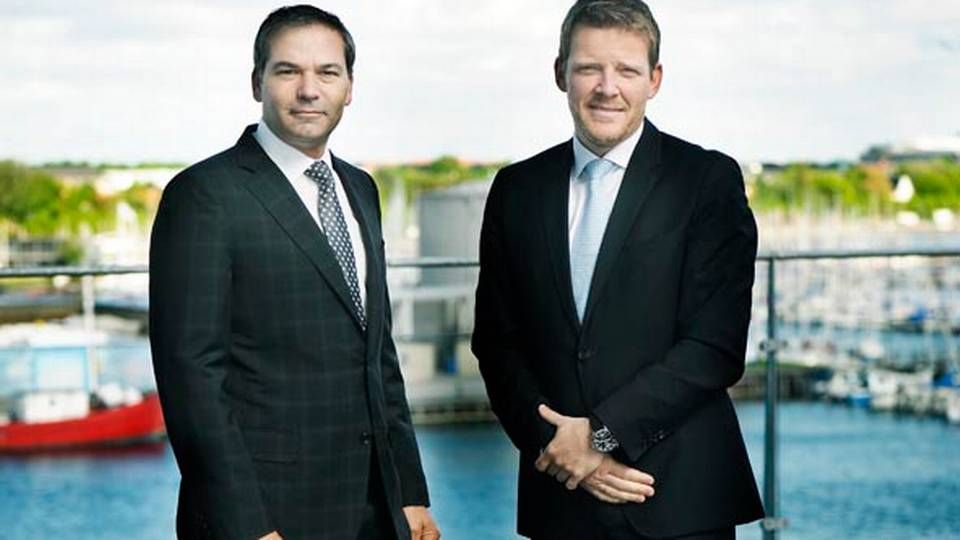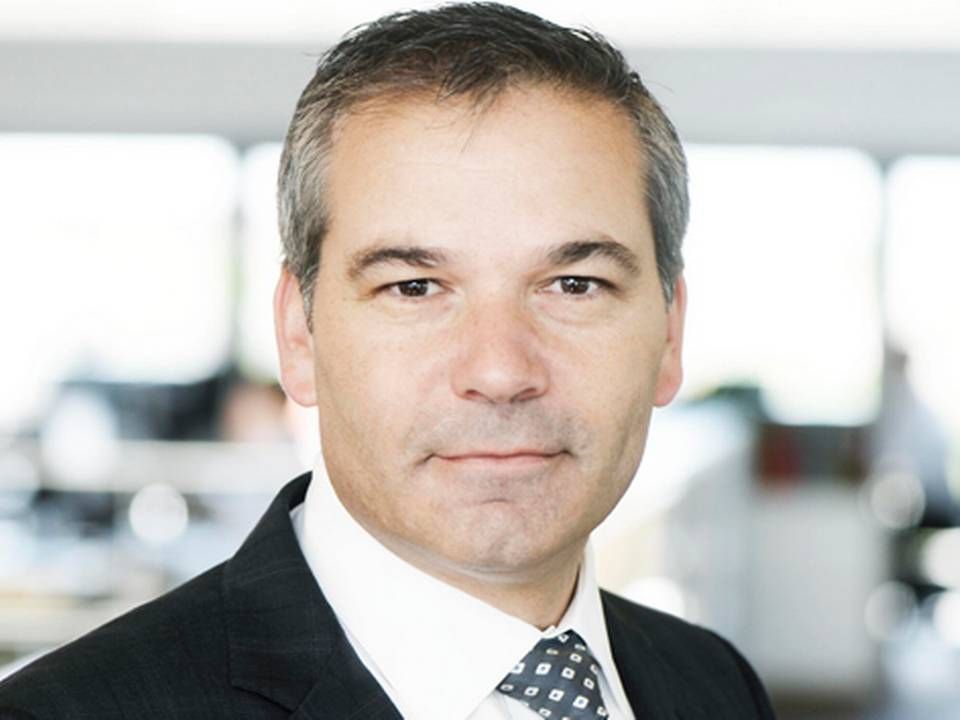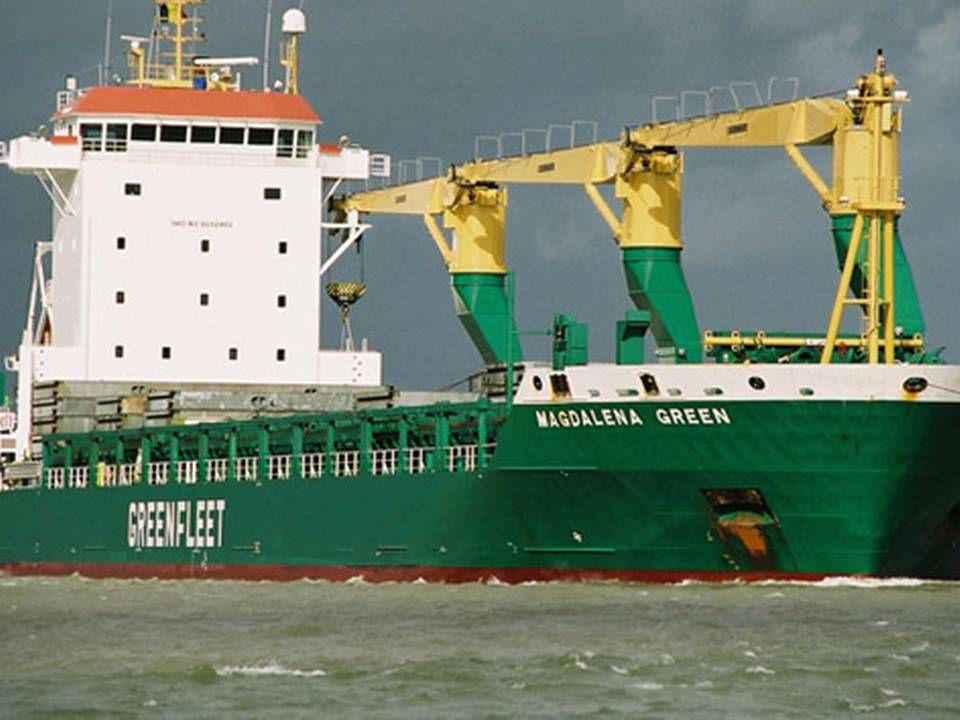Clipper's dual management on how to be two CEOs

On the one hand, the division of labor between the now two CEOs, American Gary Vogel and Danish Kristian Mørch, was in practicality already there when Clipper opted for a dual management structure in early 2013, so the dual function covering bulk and the rest of the segments respectively seemed obvious.
On the other hand, dual management does have its challenges and might seem odd, not least since Gary Vogel had previously experienced how two CEOs in the same company did not work well.
Gary Vogel:
“There’s a clear delineation between us: I’m focused primarily on bulk, and Kristian is responsible for all of our other businesses, including the ones that we will actively manage even though they’re not what we’d consider core, we want to manage these actively for a long period, they’re just not where we intend to put significant equity going forward. These would be our ro-ro business, ferry business, and multipurpose vessels.”
Kristian Mørch:
“Regarding the new structure with Gary and me, I think it reflects well how we are, from a very overall perspective, organized at Clipper. And this sort of completes the generation change that’s been planned and executed over the last couple of years. It basically means we have a structure now where Gary and I share the CEO responsibility of the group, and we have brought in Flemming Steen as CFO, and the three of us really are the management team that drives Clipper forward.
But why choose to have two CEOs which is, probably for good reasons, seldom seen?
Kristian Mørch:
“Of course it jumps out when you look at that structure that we’re two CEOs. In some companies, that might seem a strange setup. But we believe it’s very much a strength because deep in Clipper’s DNA is that we want to be really close to the businesses, and this structure allows Gary and I to really be there. It goes back to the fact that a single Group CEO would not have enough time to be as close to the businesses as we’d like to be. We want to be hands on and work the businesses, and this structure allows us to do it. And even though we have divided the businesses between us, we still speak several times a day, so it really works, and we can focus day to day on running the businesses.”
Gary Vogel:
“I actually have experience in a dual CEO role from my previous company, a company that was acquired by Clipper, and that one didn’t work particularly well, so of course there are pitfalls with it, but this one, I can tell you, works extremely well. That doesn’t mean we always agree, and in fact I think that’s a very positive thing, we challenge each other on many ideas. So there’s a benefit, as opposed to often when you have one CEO you can have a situation where he doesn’t get the pushback and challenge.
Where do you see the pitfalls?
Gary Vogel:
Pitfalls could include that you have two people on an equal level, and, as I mentioned, we don’t always agree, so there needs to be compromise, if you will, and discussion about certain things. There’s more complexity with two people, but with that complexity you have the potential for better solutions. We didn’t have a clear delineation in my former company, and in that setup it was a geographic spread, which, to be honest, wasn’t very well thought out, so we had a situation where people were overlapping in terms of reporting and scope of responsibility. I should add that Kristian and I worked together before this and had a good working relationship so it wasn’t a situation where you get two people together who don’t necessarily work well together. In our case, this was what both of us wanted. So there’s no competition about outmaneuvering each other, we’re both comfortable with it and, as I said, we think it works very well.
On general issues, could be admin or HR, who do staff members approach?
Kristian Mørch:
“That depends on who the staff members are, but obviously because I’m based in Copenhagen and Gary is based in Stamford, there are things that relate to administration here or HR or communication where people report to me on a day to day basis. But if there’s anything that concerns the press or if it’s a principal matter, it’s always a discussion between us.”
Is it also a question of empowering the American unit having a CEO in Stamford, Connecticut?
Gary Vogel:
“It has its benefits being there, and I think for instance, we’re probably the only Danish company where the CEO sits in the US, or one of the CEOs, I should say. Our view is that our office in the US is not just a representative office, but an office with a significant substance, and with many people who have been there for a long time and who are empowered to take decisions, and I think me being there only gives it more weight in that regard. But it wasn’t a strategic decision to have one CEO in the US.”
Clipper has axed and streamlined its fleet and its organization throughout the last year. The dual management is only one piece of a new structure of the company. The number of active partners has gone down from five to three, Per Gullestrup, probably the most charismatic of the partner group, is out of daily management, and today the only active partners are the two CEOs and Henrik Lund Dal. Frank G. Jensen, son of Clipper’s founder Torben G. Jensen, is Chairman of the Board and no longer part of Clipper’s executive management group. Organization is down by 50-60 employees who work at the Thorco headquarter after the merger of the two multi-purpose fleets in July 2013.
Does Clipper have the structure for the next years?
Kristian Mørch:
“This is the structure for the future. I came into Clipper at a point when there was a generation change taking place and we were resetting the team, and that has been a longer process than you’d probably see in many other companies.”
“The Thorco merger was a big thing for Clipper overall, because about 40 people in Copenhagen alone moved out of the building, and some 10-20 in our global offices. So that was very significant. There have been some changes in the support functions as well, but I think the setup and the sizes we have now are right for our activities. The growth in bulk will drive how our organization will grow going forward but it’s not a completely linear line, right, you have some efficiencies, but it will grow. But apart from that, as a group, I believe we have the right size, so I we’re not looking to make any significant changes to the way we’re structured. I think that today we’re a company with a clear structure, we know where we are with the generation change now completed. We have a very clear view of which businesses we want to be in, and how we want to compete in those businesses. So overall, things have never been as clear in Clipper as they are today.”
Clipper to deploy three of four vessels in bulk
Clipper Group considers more eco newbuildings




















